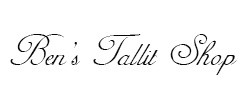The Ptil Tekhelet Association held a conference last week at the Menachem Begin Heritage Center in Jerusalem to mark the centennial of Rabbi Dr. Yitzchak Halevi Herzog’s doctoral thesis, "Purple and Blue in Ancient Israel." At the conference, Dr. Naama Sukenik presented new findings from the archeological digs at the Murba’at Caves in the Judean Desert.
Among fabrics identified by Israel Antiquities Authority researchers was a piece of fabric that may have been made using a technique similar to the process for making the tekhelet (blue) dye for tzitzit. Only two pieces of fabric treated with actual dye, Murex trunculus, have been found in Israel to date.
The fabrics identified by Dr. Na‘ama Sukenik represent the most prestigious colors in antiquity – indigo, crimson and purple – mentioned in Jewish sources Thousands of fabric specimens dating to the Roman period have been discovered in the Judean Desert and various regions of the Negev and the Arava. So far only two were colored with dye extracted from the Murex trunculus snail.
Now three other rare fabrics belonging to pieces of prestigious textiles, which may have been used as clothing in the Roman period, have been uncovered. Dr. Sukenik’s doctoral dissertation was supervised by Dr. David Illuz Professor Zohar Amar of Bar-Ilan University, and the textiles were examined by Dr. Orit Shamir, curator of organic materials at the Israel Antiquities Authority.
These prestigious textiles, from the Wadi Murabba‘at Caves located south of Qumran, were revealed in a study that analyzed the dye of 180 textiles specimens from the Judean Desert caves. Among the many textiles, most of which were dyed using substances derived from plants, were two purple-bordeaux colored textiles – parts of tunics that were double dyed utilizing two of the most expensive materials in antiquity – Murex trunculus (Hexaplex trunculus) and American Cochineal insect.
A third textile, made of wool, was dyed by exposing the fibers to sunlight or heat, represents another use of the Murex snail for achieving a shade of blue, and the item in question may be an indigo fabric made by means of a technique similar to making the tekhelet (blue) in tzitzit strings. The importance of this fabric is extremely significant as there are practically no parallels for it in the archaeological record.
Dr. Sukenik, assisted by Dr. Alexander Varvak, examined the colors using advanced analytical instrumentation for identifying dye substances (HPLC). The testing of the fabrics, performed by Dr. Orit Shamir of the Israel Antiquities Authority, revealed that the two purple textiles were spinning in a unique manner characteristic of imported textiles, whereas the blue textile was spinning in the same fashion as the local textiles.
Of all of the dyes that were in use, purple is considered the most prestigious color of the earlier periods, but it seems the public’s fondness for this reached its peak in the Hellenistic-Roman period. The purple-dyed fabrics attested to the prestige of the garment and the social status of its owner. There were times when the masses were forbidden from dressing in purple clothing, which was reserved solely for the emperor and his family. These measures only served to increase the popularity of that color, whose price soared and was equal to gold.
It is difficult to ascertain how such prestigious fabrics came to be in the Murabba‘at caves. They might have been part of the property belonging to Jewish refugees from the time of the Bar Kokhba revolt and demonstrate their economic prosperity before the outbreak of the uprising. Another possibility is that they were part of the possessions of a small Roman army unit stationed in the Murabba‘at caves following the Bar Kokhba Revolt. These soldiers may have brought some of their belongings to Israel from overseas, and others they purchased from the local Jewish population during their service in the country.
 United States Dollar
United States Dollar
 Shekel
Shekel
 Euro
Euro
 British Pound
British Pound
 Australian Dollar
Australian Dollar
 New Zealand Dollar
New Zealand Dollar
 Canadian Dollar
Canadian Dollar
